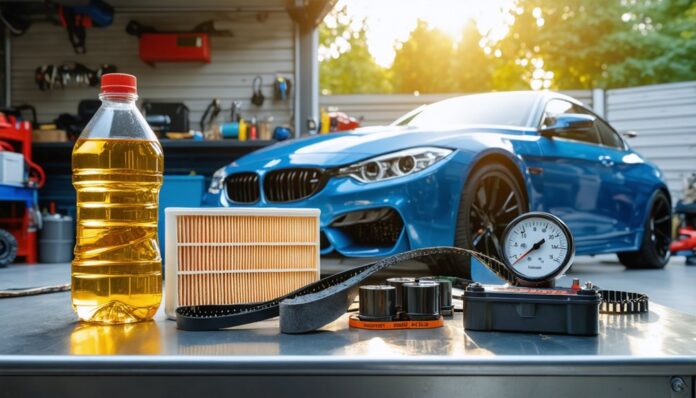You don’t need to be a mechanic to keep your car in top shape, but you do need to know the basics of vehicle maintenance. These five essential checks can help prevent costly repairs and extend your car’s lifespan. Whether you’re a new driver or have years of experience behind the wheel, understanding these fundamental checks will save you money and protect your investment. Let’s explore what you need to know.
Monitoring Tire Pressure and Tread Wear
While many car owners focus on engine maintenance, properly monitoring your tire pressure and tread wear is equally essential for safety and performance.
Check your tire pressure monthly using a reliable gauge, ensuring it matches the manufacturer’s recommended PSI listed on your driver’s side door frame. Underinflated tires reduce fuel efficiency and handling, while overinflated tires compromise traction and ride comfort.
To check tread wear, use the penny test by inserting a penny upside down into your tire’s grooves. If you can see Lincoln’s entire head, it’s time to replace the tire.
Look for uneven wear patterns, which could indicate alignment issues or the need for rotation. Don’t forget to inspect your spare tire regularly and maintain its proper pressure for emergencies.
Checking Engine Oil Levels and Quality
Anyone can learn to check their engine oil properly, an essential skill for maintaining engine health and longevity.
Start by parking your car on level ground and waiting until the engine’s completely cool. Pull out the dipstick, wipe it clean with a lint-free cloth, then reinsert it fully before removing it again to check the oil level.
The oil should sit between the two marks on your dipstick. Look at the oil’s color and consistency – clean oil appears amber, while dirty oil looks dark and gritty.
If the level’s low or the oil’s dirty, it’s time for a change. You’ll also want to check for any metal particles or a milky appearance, which could indicate serious engine problems.
Remember to check your oil at least monthly or every 1,000 miles.
Inspecting Brake Performance and Fluid
How can you tell if your brakes need attention? Listen for squealing, grinding, or vibrations when braking, and notice if your car pulls to one side. If your brake pedal feels spongy or requires more pressure than usual, it’s time for an inspection.
Check your brake fluid level monthly through the translucent reservoir under the hood. The fluid should be between the minimum and maximum marks. If it’s dark brown instead of honey-colored, it needs replacement. Low fluid levels could indicate worn brake pads or a leak in the system.
Test your brakes in a safe area by applying steady pressure at different speeds. If you hear metal-on-metal sounds or feel pulsing in the pedal, visit a mechanic immediately.
Don’t wait until your brakes fail to get them serviced.
Testing Battery Health and Connections
Since your car’s battery is essential for starting and running electrical systems, regular testing can prevent unexpected failures.
Check your battery’s voltage using a multimeter – a healthy battery should read between 12.4 and 12.7 volts when the engine’s off. Look for signs of corrosion around the terminals and clean them with a wire brush if needed.
You’ll also want to verify all cable connections are tight and clear from damage. If your battery’s more than three years old, have it professionally tested at an auto parts store. Many offer this service at no cost.
Watch for warning signs like slow engine cranking, dimming headlights, or electrical issues. If you notice these problems, it’s time to replace your battery before you’re left stranded.
Maintaining Proper Fluid Levels
Beyond battery care, your car needs regular fluid checks to run at its best.
You’ll want to monitor six essential fluids: engine oil, coolant, brake fluid, power steering fluid, transmission fluid, and windshield washer fluid. Check your oil level monthly using the dipstick, ensuring it’s between the minimum and maximum marks.
Keep your coolant reservoir filled to prevent engine overheating, but never remove the cap when the engine’s hot.
Brake fluid should be clear and at the proper level – low or dark fluid requires immediate attention. For power steering, check the reservoir when the engine’s cold.
Your transmission fluid should be pink and sweet-smelling; if it’s dark or burnt-smelling, consult a mechanic.
Don’t forget windshield washer fluid – you’ll need it for clear visibility.
In Conclusion
You’ll find that these five essential car maintenance checks aren’t just about keeping your vehicle running – they’re about safety and savings too. By staying on top of your tires, oil, brakes, battery, and fluids, you’re protecting your investment and preventing costly repairs down the road. Don’t wait for warning lights or problems to appear; make these checks part of your regular routine.



